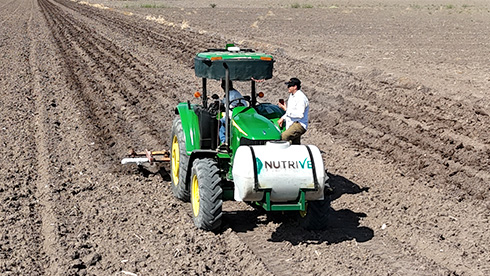Our goal at CHCNAV Agriculture is to use cutting-edge technology to increase agricultural productivity. The CHCNAV NX612, our automated steering system, is intended to completely transform the way farmers traverse their fields. In this essay, we will compare manual steering methods with our superior automated steering system, emphasizing why CHCNAV stands out in boosting productivity and minimizing operator fatigue.
The Limitations of Manual Steering
Manual steering has long been the traditional approach in farming, requiring operators to constantly adjust the steering wheel to maintain the proper course. This method can lead to several challenges, including operator fatigue, inaccuracy, and inefficiencies during long hours in the field. Farmers often find themselves struggling to stay on track, especially during critical operations such as planting or harvesting. The repetitive motion and constant focus required for manual steering can be taxing, ultimately impacting overall performance and crop yield. Given these drawbacks, many farmers are seeking alternatives that improve precision and ease of use.
Advantages of the CHCNAV NX612 Automated Steering System
The CHCNAV NX612 automated steering system offers numerous advantages over traditional manual steering. One of the primary benefits is its remarkable accuracy. Utilizing GNSS technology and SkyTriX satellite correction services, our automated steering system achieves positioning accuracy of ±2.5 cm. This level of precision allows farmers to navigate fields with confidence, resulting in less overlap and reduced resource waste. Additionally, our automated steering system significantly reduces operator effort, minimizing fatigue during long work hours.
Another advantage of the CHCNAV NX612 is its ability to adapt to various agricultural practices and terrain types. With customizable settings, farmers can easily tailor the automated steering system to suit their specific crop requirements. Whether navigating rolling hills or flat fields, the NX612 maintains consistent performance, making it an invaluable tool for modern agriculture. This adaptability further enhances operational efficiency, allowing farmers to focus on more strategic tasks rather than the intricacies of steering.
Enhanced Features of CHCNAV’s Automated Steering System
In addition to its accuracy and adaptability, the CHCNAV NX612 automated steering system boasts a range of advanced features designed to improve the farming experience. For instance, the system includes multiple guideline options, such as AB lines and curve lines, enabling farmers to select the most appropriate navigation strategy for their fields. Additionally, its user-friendly interface ensures that operators can manage their operations smoothly without having to grapple with complex controls.
The integrated implement guidance feature also sets the NX612 apart from manual steering methods. By ensuring that implements are maintained in line, farmers can prevent drift and achieve optimal results for various operations, including tillage, planting, and spraying. This combination of advanced technology and practical functionality reinforces CHCNAV’s commitment to supporting farmers in achieving their goals.
Conclusion
In conclusion, while manual steering has served as a foundation for agricultural practices, the limitations of this approach are increasingly apparent. The CHCNAV NX612 automated steering system provides a superior alternative by enhancing accuracy, reducing operator fatigue, and offering advanced features that adapt to various farming needs. At CHCNAV Agriculture, we believe that embracing automated steering technology is key to unlocking the full potential of modern farming. Trust CHCNAV Agriculture to lead the way in innovation and efficiency with our state-of-the-art automated steering system.
